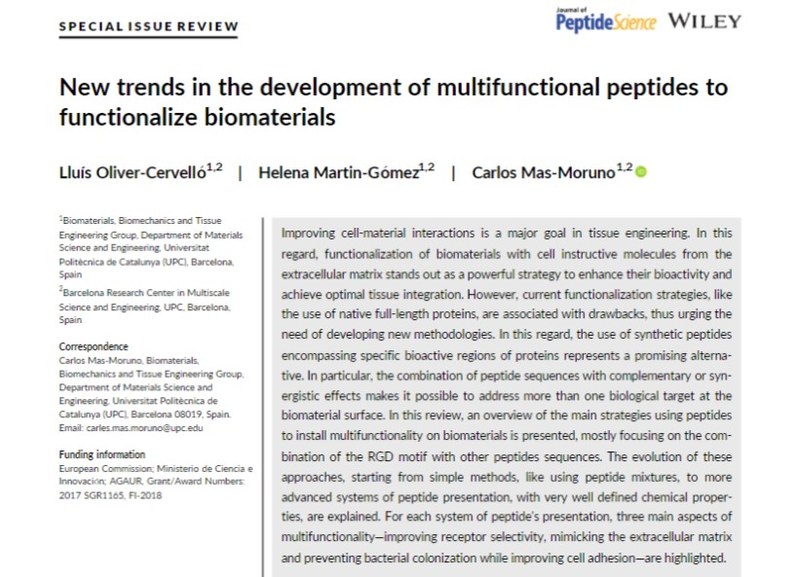Review on new trends in the development of multifunctional peptides to functionalize biomaterials
Jun 01, 2021
Bio-TUNE researchers Dr. Carles Mas-Moruno and PhD student Lluis Oliver, together with Dr. Helena Martin-Gómez, just published a review on "New trends in the development of multifunctional peptides to functionalize biomaterials" at the Journal of Peptide Science.
A new review on "New trends in the development of multifunctional peptides to functionalize biomaterials" has been recently published at the Journal of Peptide Science by members of the Bio-TUNE project.
The review states that improving cell-material interactions is a major goal in tissue engineering. In this regard, functionalization of biomaterials with cell instructive molecules from the extracellular matrix stands out as a powerful strategy to enhance their bioactivity.
However, current functionalization strategies, like the use of native full-length proteins, are associated with drawbacks. The use of synthetic peptides encompassing specific bioactive regions of proteins represents a promising alternative.
In this review, an overview of the main strategies using peptides to install multifunctionality on biomaterials is presented, mostly focusing on the combination of the RGD motif with other peptides sequences. The evolution of these approaches, starting from simple methods, like using peptide mixtures, to more advanced systems of peptide presentation, with very well defined chemical properties, are explained. For each system of peptide's presentation, three main aspects of multifunctionality—improving receptor selectivity, mimicking the extracellular matrix and preventing bacterial colonization while improving cell adhesion—are highlighted.

Share: